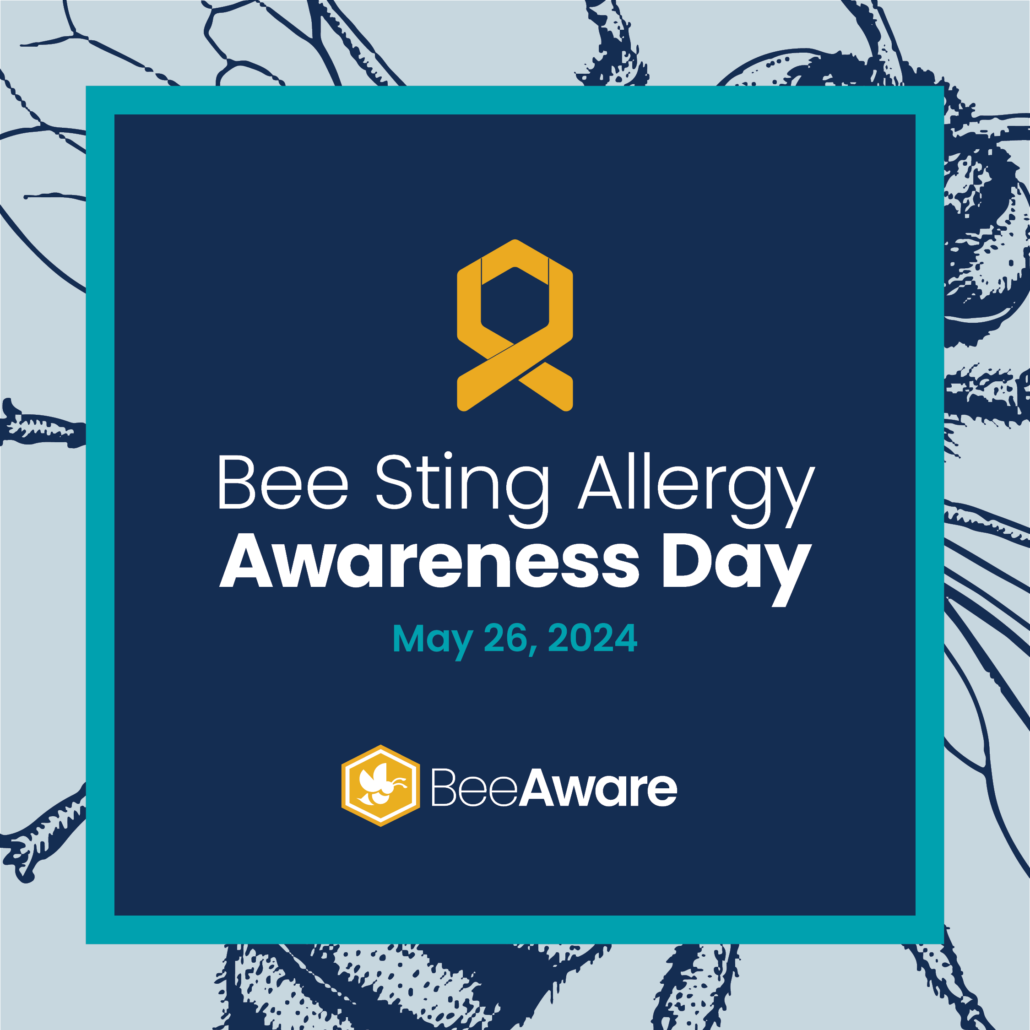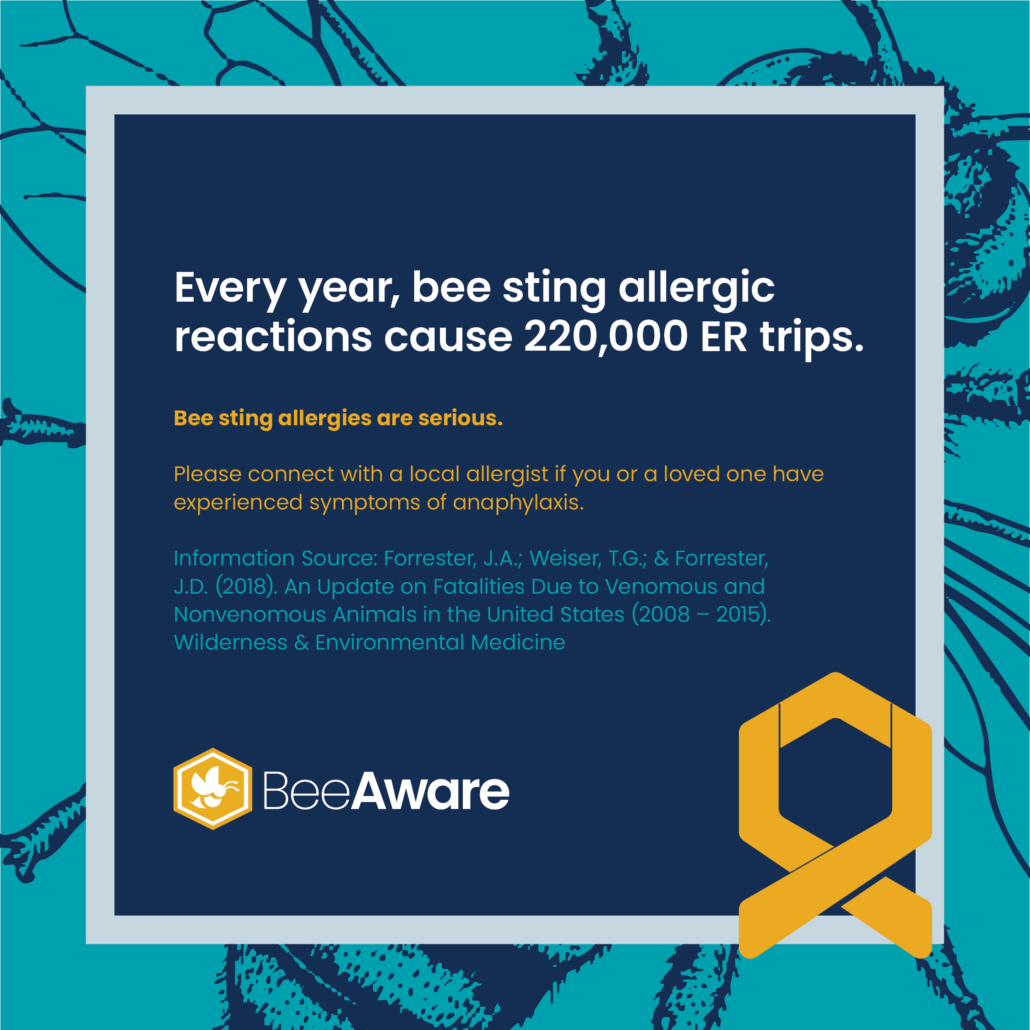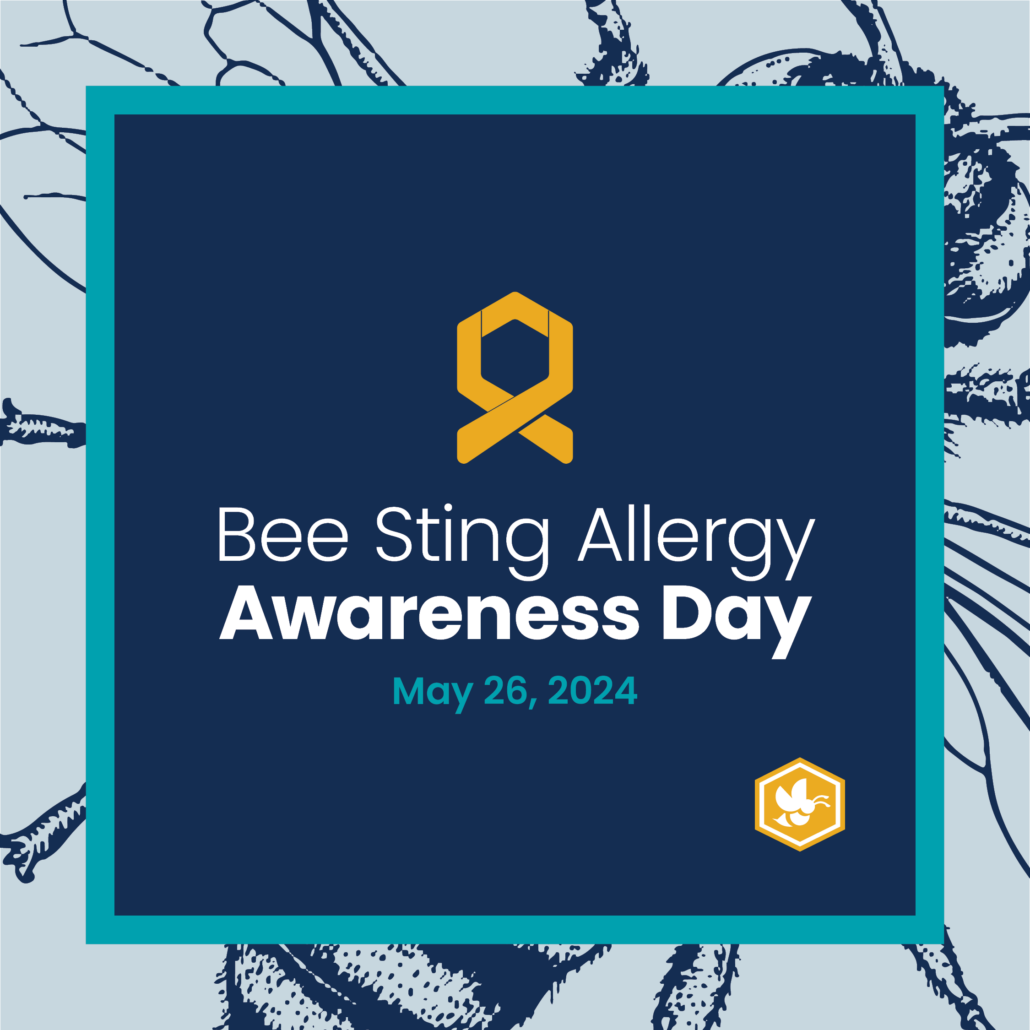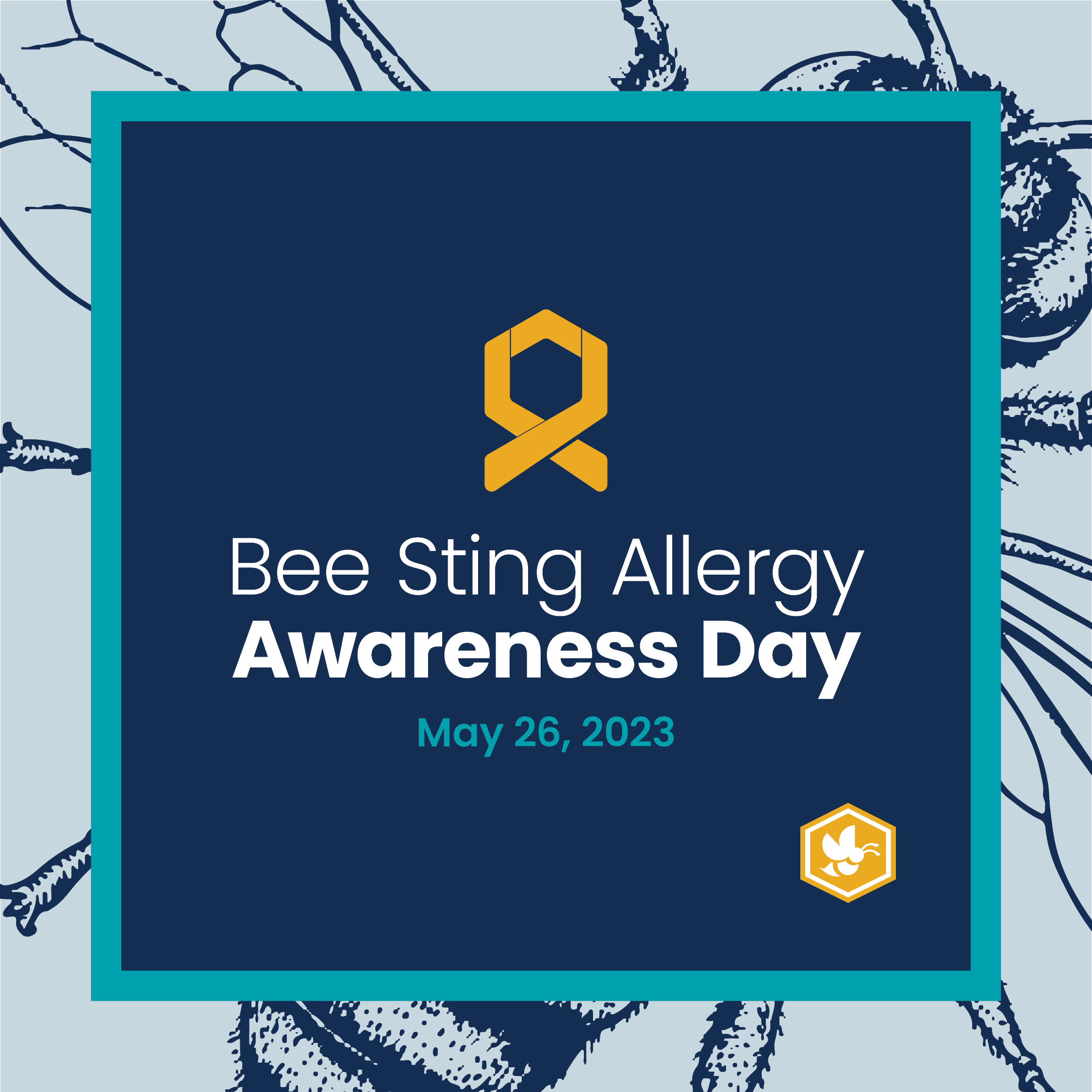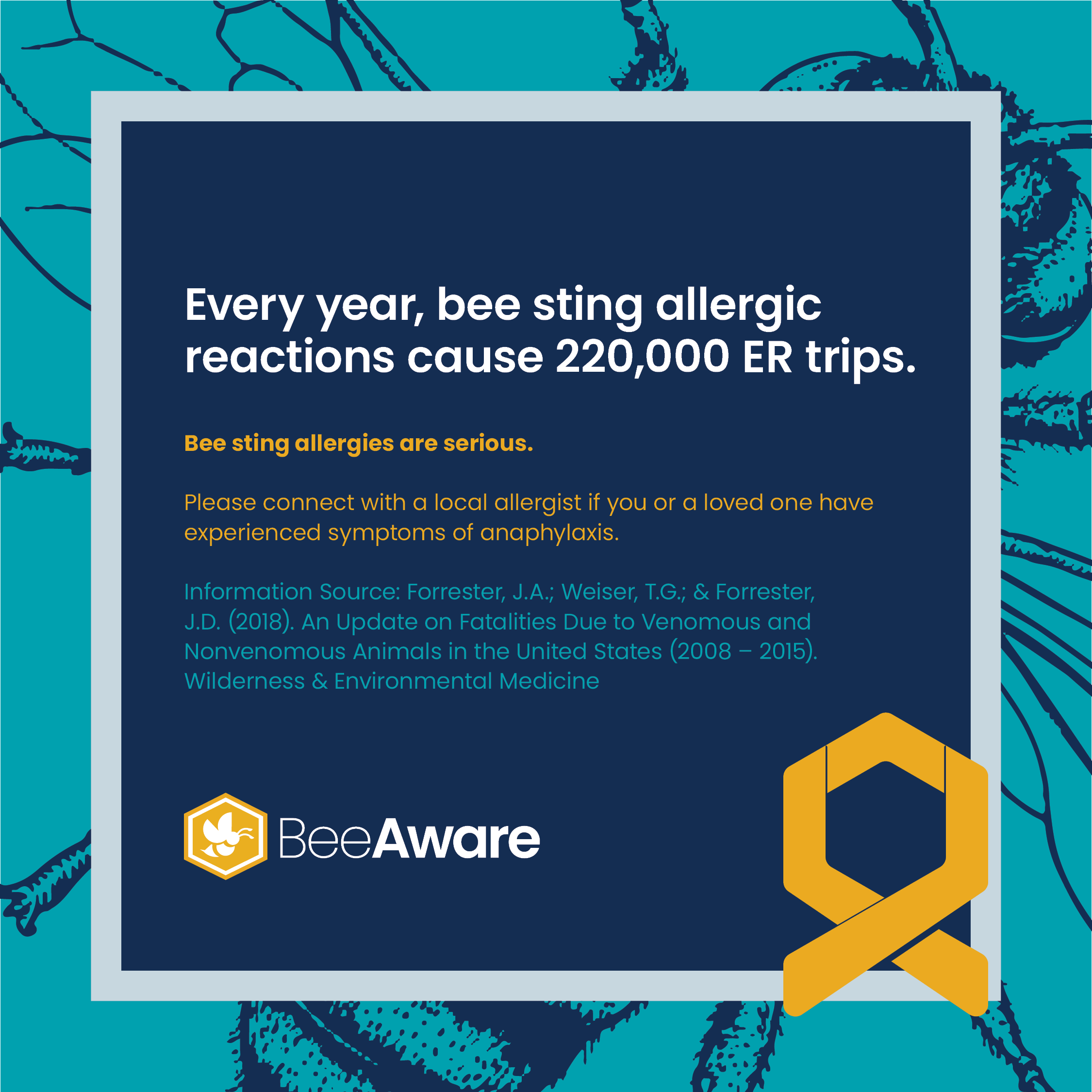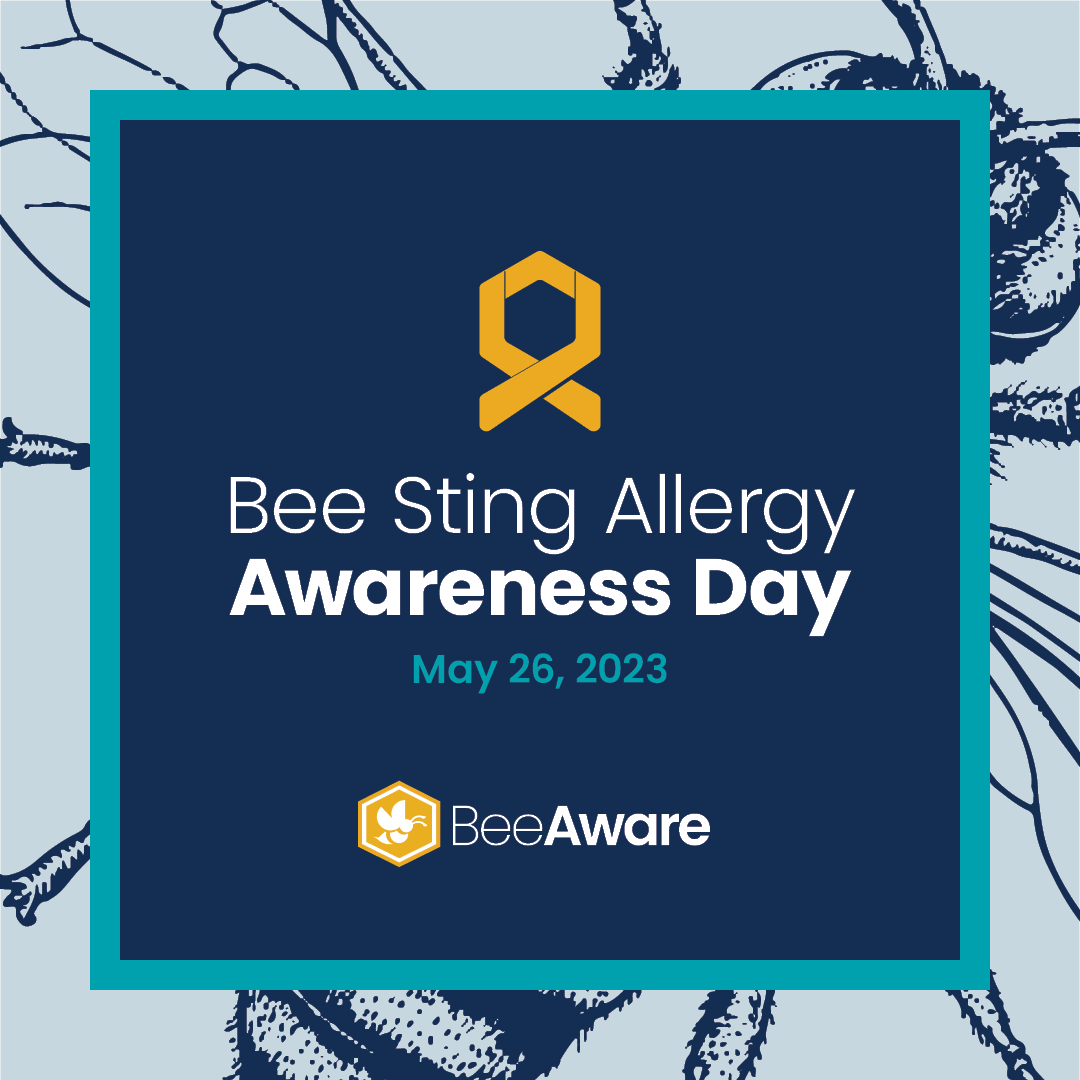May 26, 2024
Bee Sting Allergy Awareness Day

16M
Americans Are
living with a potentially life-threatening bee sting allergy.1
220K
ER Visits
occur each year for bee sting allergy-related anaphylaxis.2
60
Deaths Per Year
are directly related to severe bee sting reactions.2
Help Spread the Word! Share This on Social Media.
Why Raise Awareness About Bee Sting Allergies?
Bee Sting Allergies Are Too Easily Dismissed
16 million Americans are living with potentially life-threatening bee sting allergies.1 Even though most people know someone with a bee sting allergy, the seriousness is under-communicated. Don’t dismiss the signs of a moderate or severe reaction. It only takes a few minutes for the body to enter anaphylaxis after a sting: a deadly allergic response that takes 60 lives per year.2 This is why we are raising awareness about bee sting allergies.
Treatment Options Are Not Common Knowledge
Discover Venom immunotherapy
A Bee Sting Allergy Can Feel Isolating

Share Your Story
Do you have a bee sting allergy? Share your story! Let others know what to look out for, the preventative steps you take, and how you’ve found comfort outdoors.
Bee Sting Allergy FAQ
An allergic reaction is a bodily response to a foreign substance. In most cases, this reaction is comprised of minor or moderate symptoms. Examples of these inconvenient symptoms are itchy or watery eyes, a runny nose, or a rash.
Sometimes, a bee sting results in a serious and even deadly reaction. In the medical community, this type of severe reaction is called anaphylaxis. Anaphylactic symptoms include:
- Trouble breathing
- Hives or swelling
- Tightness of the throat
- Nausea
- Vomiting
- Abdominal pain
- Diarrhea
- Dizziness
- Fainting
- Low blood pressure
- Rapid heart beat
- Cardiac arrest
Your immune system makes proteins called “antibodies” to fight off bad viruses. There are two types of antibodies involved in bee sting allergic reactions: IgE and IgG.
IgE antibodies recognize foreign substances, like bee venom, as an attack. When a large amount of venom is introduced to the body, these IgE antibodies may get out of control. This results in a severe reaction.
IgG antibodies respond differently to foreign substances. Instead of attacking, they bind to foreign venom proteins. Then, the antibodies tell the immune system to not respond. Research shows allergy shots stimulate the immune system to make these protective IgG antibodies.
The only way to know if you have a bee sting allergy is to speak with a local allergist. You should do this if you:
- suspect you have an allergy
- have experienced severe symptoms after a sting
- have experienced symptoms throughout your whole body after a sting
- have any concerns and or questions that a medical professional can answer
Your allergist may recommend testing, a safe way to confirm your allergy and make treatment suggestions.
There are two common options for treating bee sting allergies: reactive and proactive.
Reactive: Most often, bee sting allergy patients are prescribed an epinephrine pen. In an emergency, this tool injects epinephrine into the bloodstream to reverse life-threatening allergic reactions. It can help stop the airway swelling and increase low blood pressure. One epinephrine pen may not be enough to stop anaphylaxis, though. Two pens should be carried at all times and immediate medical attention is required after use.
Proactive: Venom immunotherapy is a preventative treatment option for bee sting allergies. Over time, immunity is acquired through allergy shots. Ultimately, venom immunotherapy is 98% effective in preventing systemic allergic reactions to insect stings.3 Once you’re protected, you have an excellent chance of preventing a life-threatening emergency before it happens.
2600 BC
First Notable Bee Sting Death
Pharaoh Menes dies after suffering an anaphylactic reaction to a wasp sting.
1800-1900s
Making Headlines
Detailed descriptions of honey bee stings started to appear in publications describing what is now referred to as anaphylaxis.
1901
Discovery of Adrenaline
Japanese biochemist Jokichi Takamine announced his discovery of adrenaline, now knowns as epinephrine.
1913
New Terminology
French physiologist Charles Richet was awarded the Nobel Prize for describing and naming anaphylaxis.
1925
Venom Immunotherapy
The first description of venom immunotherapy is published. The process used whole insect bodies and desensitized one patient.
1960s
Increased Reactions
Anaphylaxis rates begin to climb. Reactions are occurring outside of a clinical setting and to substances other than medicine
1970s
New Technology
The first purified venoms for desensitization are developed.
1974
Immunotherapy Success
Publication reports a successful case of immunotherapy using purified bee venom to treat a 4-year-old child with a honey bee venom allergy.
1987
Reactive Treatment
FDA approved Kaplan’s EpiPen®, the first modern epinephrine auto-injector.
2013
Public Access
President Obama signed the School Access to Emergency Epinephrine Act, which provides financial incentives to schools that keep epinephrine auto-injectors on hand.
Help Raise Awareness on Social Media
4 EASY WAYS TO HELP RAISE AWARENESS
- Post on Social Media: Use our social media toolkit or create your own post about bee sting allergies. Link to one of our helpful articles!
- Talk to a Friend: Do you know someone with a bee sting allergy? Check in with them! If they need an allergist, help them find a local provider.
- Inform Your Community: Are you in the medical field? We offer FREE patient education handouts, printed and shipped to you. Make a request!
- Share Your Story: Do you have a bee sting allergy? Share your story with us! You may be featured on our website or social media accounts.
Learn More with Helpful Articles

What is Venom
Immunotherapy?
Venom immunotherapy is a highly effective treatment for bee sting allergies. Learn why and how it works.

Signs of a Bee Sting
Allergic Reaction
Learn to recognize the symptoms of bee sting allergic reactions. That way, you’re never taken off guard.
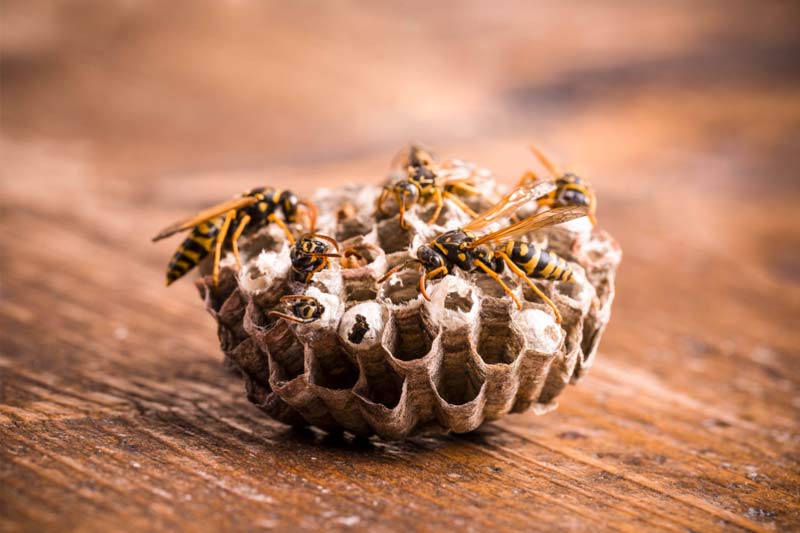
Staying Safe: How to Prevent Wasp Nests
Don’t share your home with wasps. Use these six easy methods to prevent wasp nests instead.


